2023 Bridges Conference Fashion Show
Jiangmei Wu
Designers
Jiangmei Wu
Associate Professor
Indiana University
Bloomington
Biography
I am intrigued by these naturally occurring folds and how they can be analyzed in order to understand nature. Unfolding a folded design reveals a patterned map of creating and generating. And this map, also called a ‘crease pattern,’ is often the result of counterintuitive deliberation and calculation based on mathematical understanding. While it is difficult to describe the folded form through the visual characteristics of the folds on this map, it is more difficult to reverse engineer and come up with logical patterns of folds that can then be folded into desirable forms. I often employ mathematical understanding and computational algorithms in generating a map of folds.
Looks

Kallos
Hiroko Hanamura for modeling, Hannah Jones for help with sewing, and Jane Matrana for fashion consultation. Photo Courtesy: The Advanced Visualization Laboratory (AVL) at Indiana University.
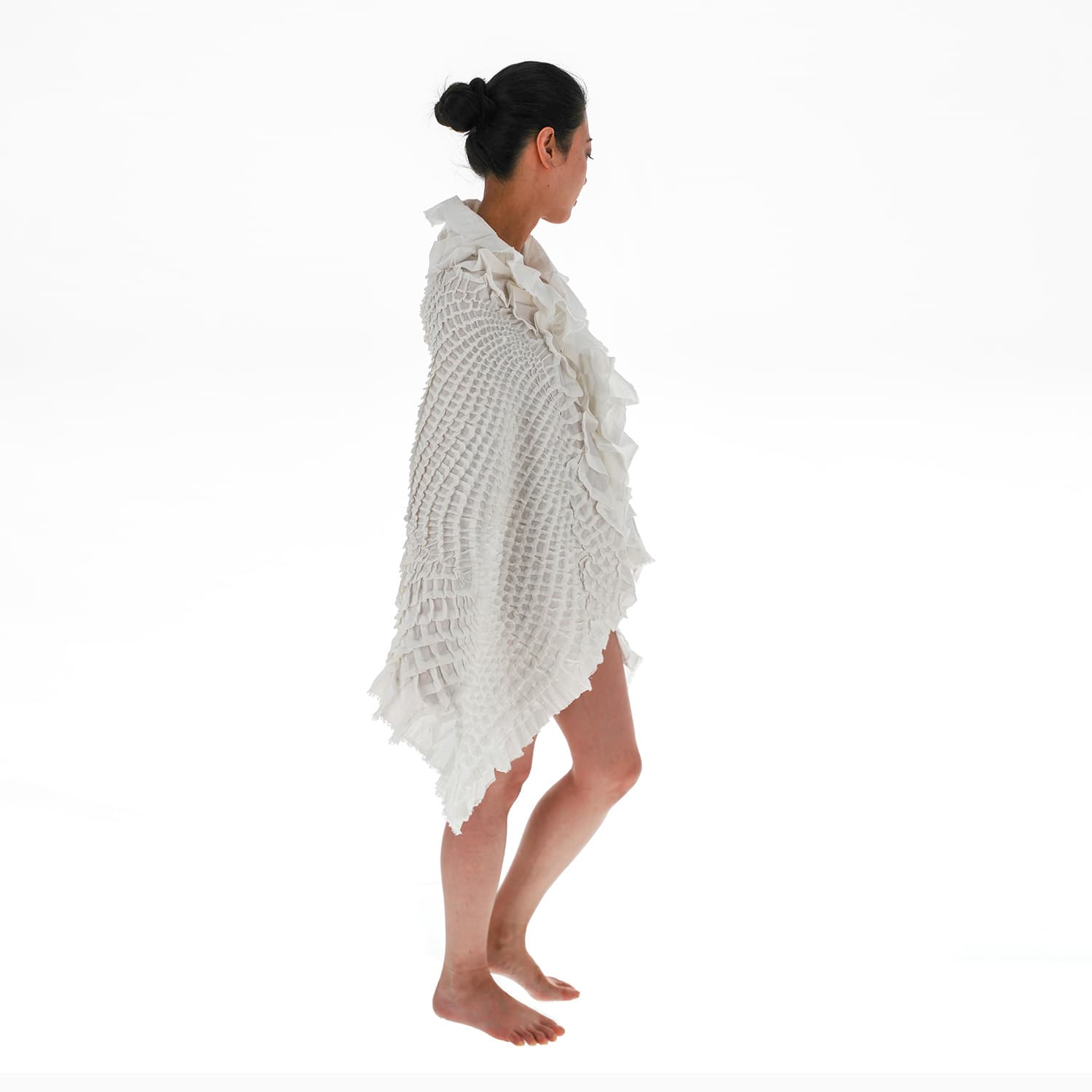
Kallos
Hiroko Hanamura for modeling, Hannah Jones for help with sewing, and Jane Matrana for fashion consultation. Photo Courtesy: The Advanced Visualization Laboratory (AVL) at Indiana University.
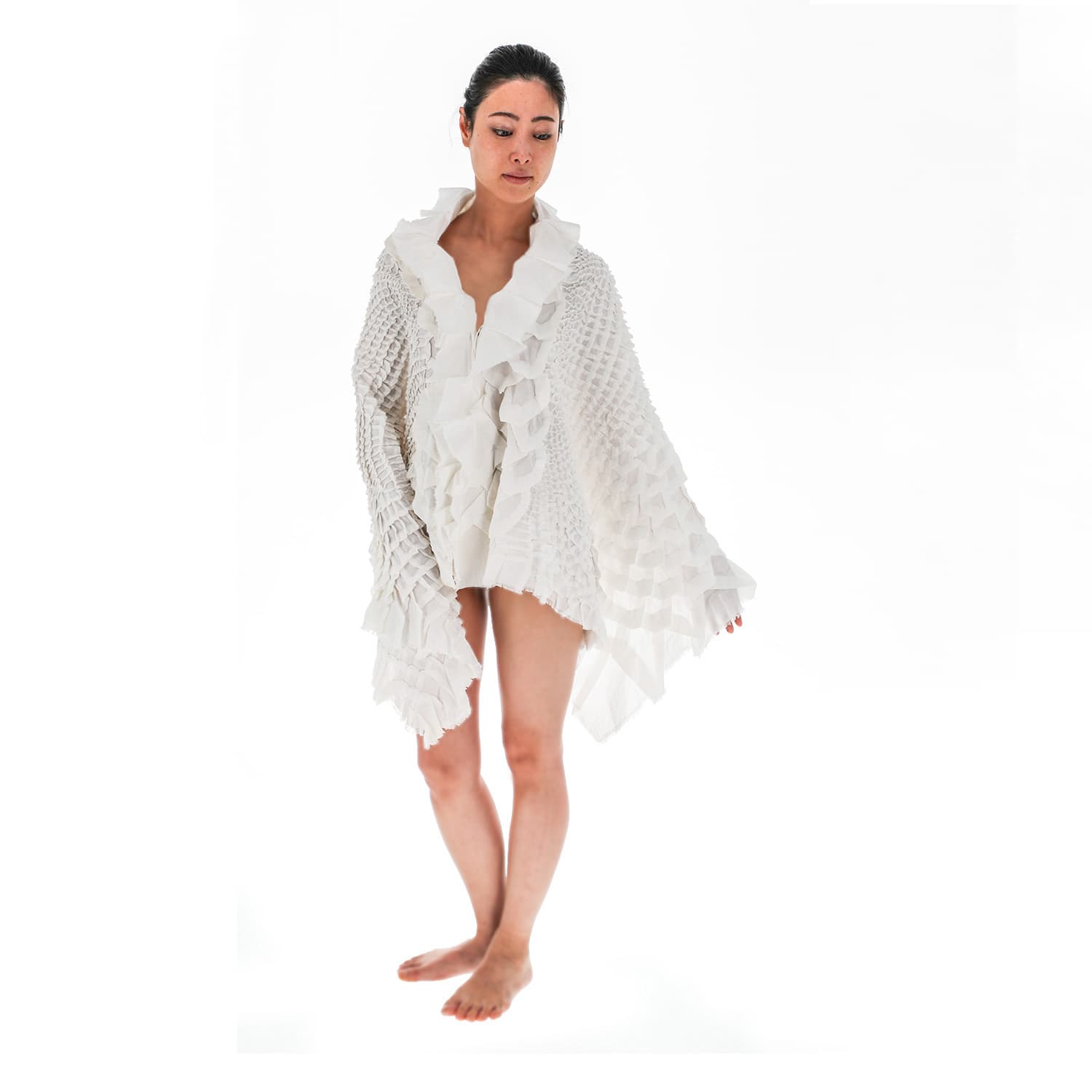
Kallos
Hiroko Hanamura for modeling, Hannah Jones for help with sewing, and Jane Matrana for fashion consultation. Photo Courtesy: The Advanced Visualization Laboratory (AVL) at Indiana University.
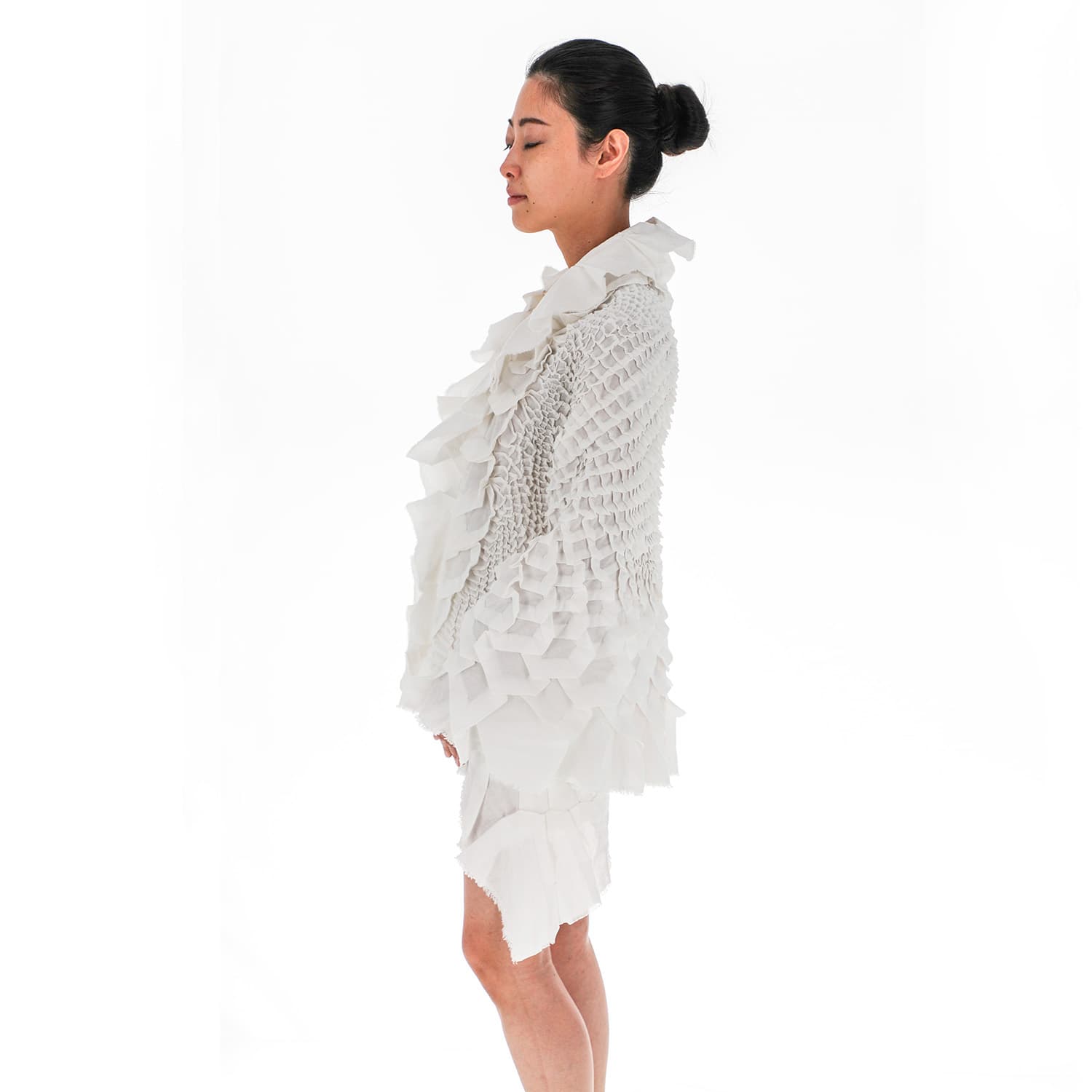
Kallos
Hiroko Hanamura for modeling, Hannah Jones for help with sewing, and Jane Matrana for fashion consultation. Photo Courtesy: The Advanced Visualization Laboratory (AVL) at Indiana University.
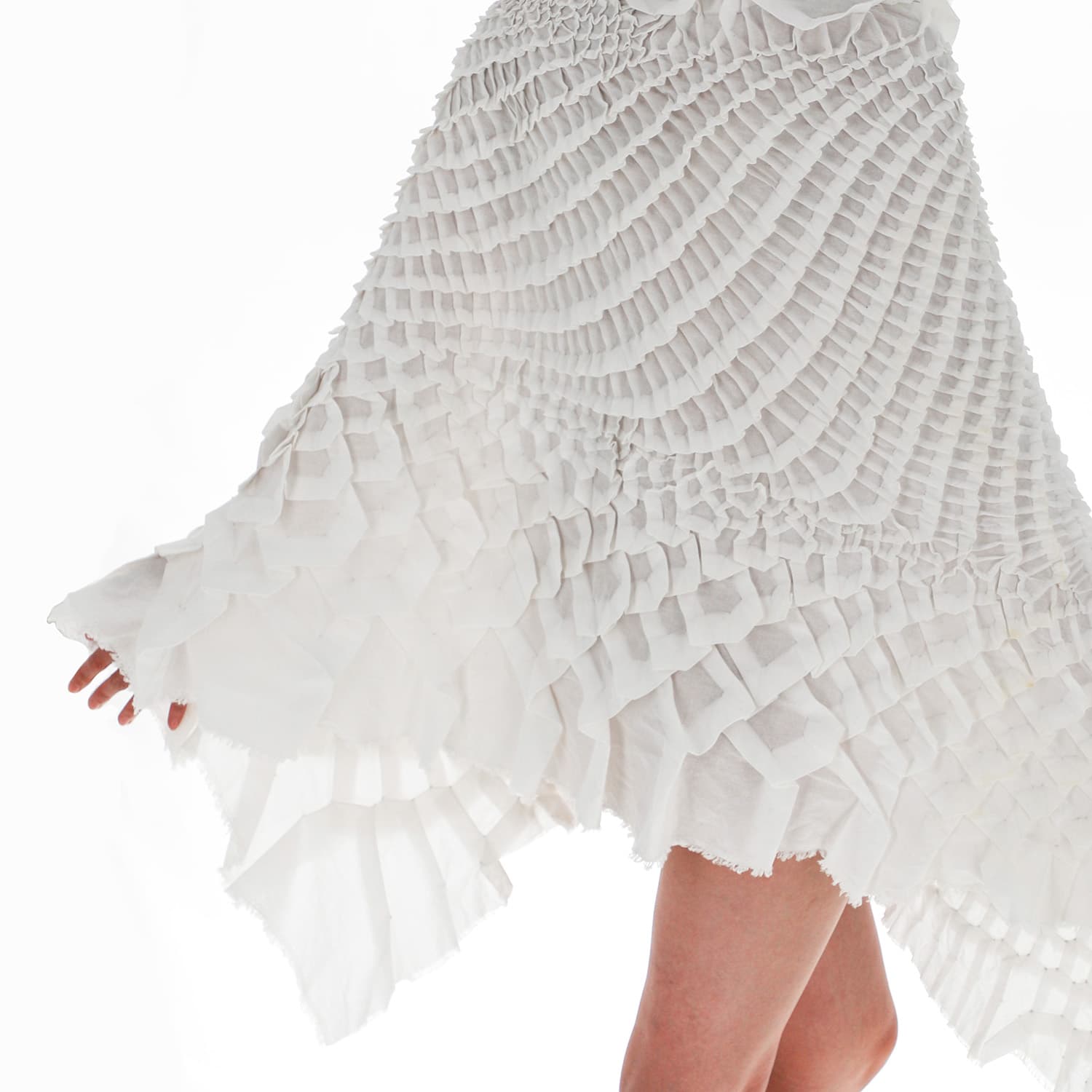
Kallos, Detail
Hiroko Hanamura for modeling, Hannah Jones for help with sewing, and Jane Matrana for fashion consultation. Photo Courtesy: The Advanced Visualization Laboratory (AVL) at Indiana University.
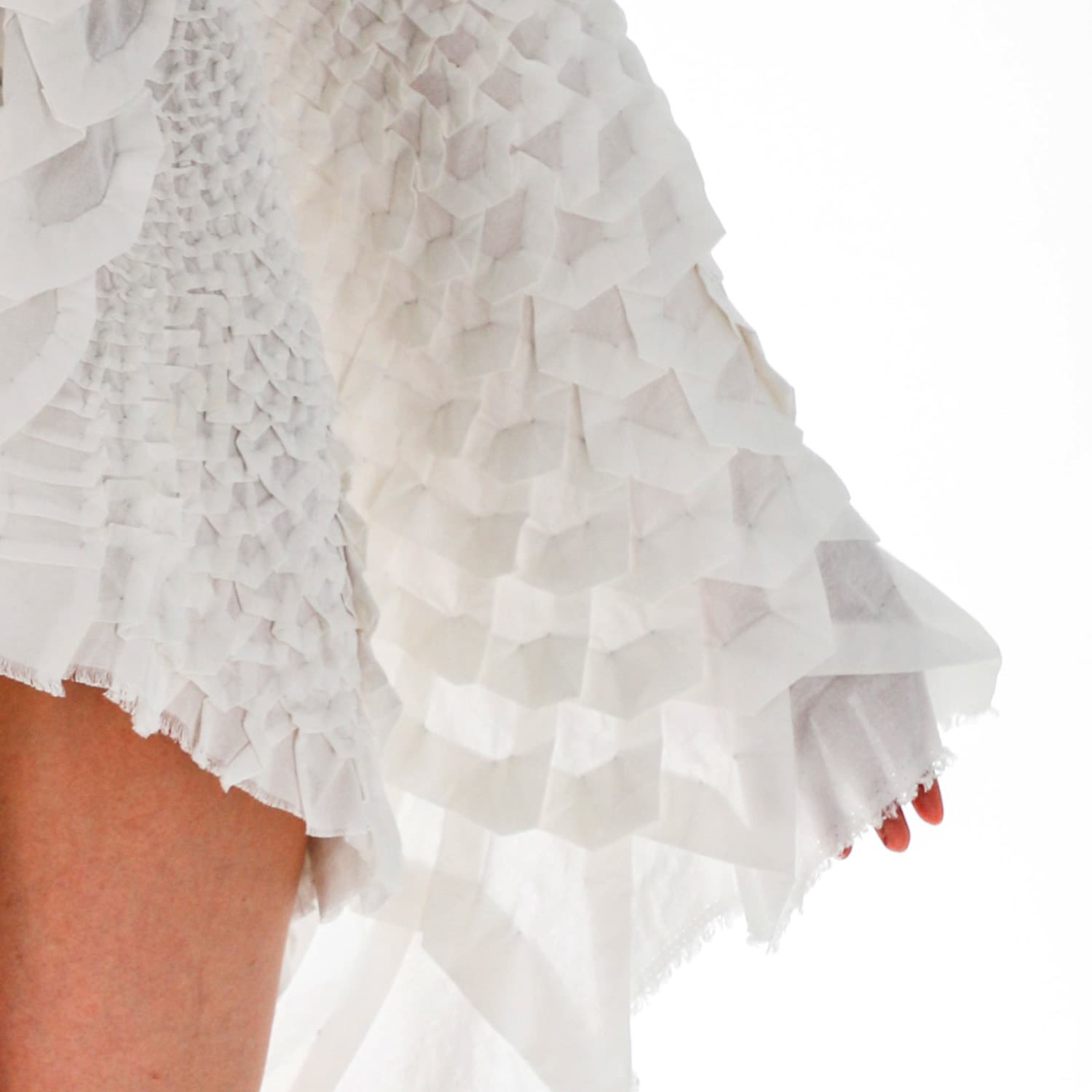
Kallos, Detail
Hiroko Hanamura for modeling, Hannah Jones for help with sewing, and Jane Matrana for fashion consultation. Photo Courtesy: The Advanced Visualization Laboratory (AVL) at Indiana University.
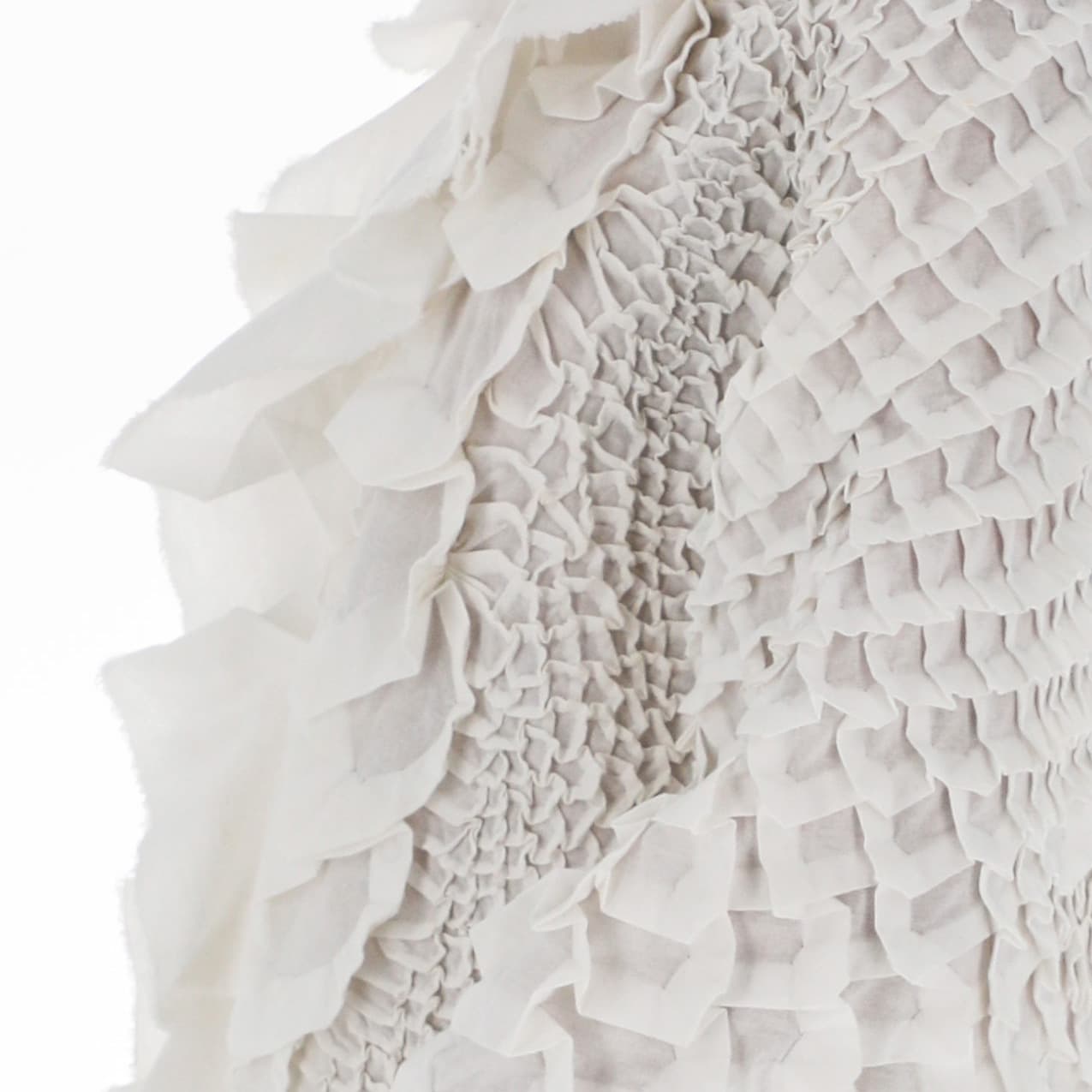
Kallos, Detail
Hiroko Hanamura for modeling, Hannah Jones for help with sewing, and Jane Matrana for fashion consultation. Photo Courtesy: The Advanced Visualization Laboratory (AVL) at Indiana University.
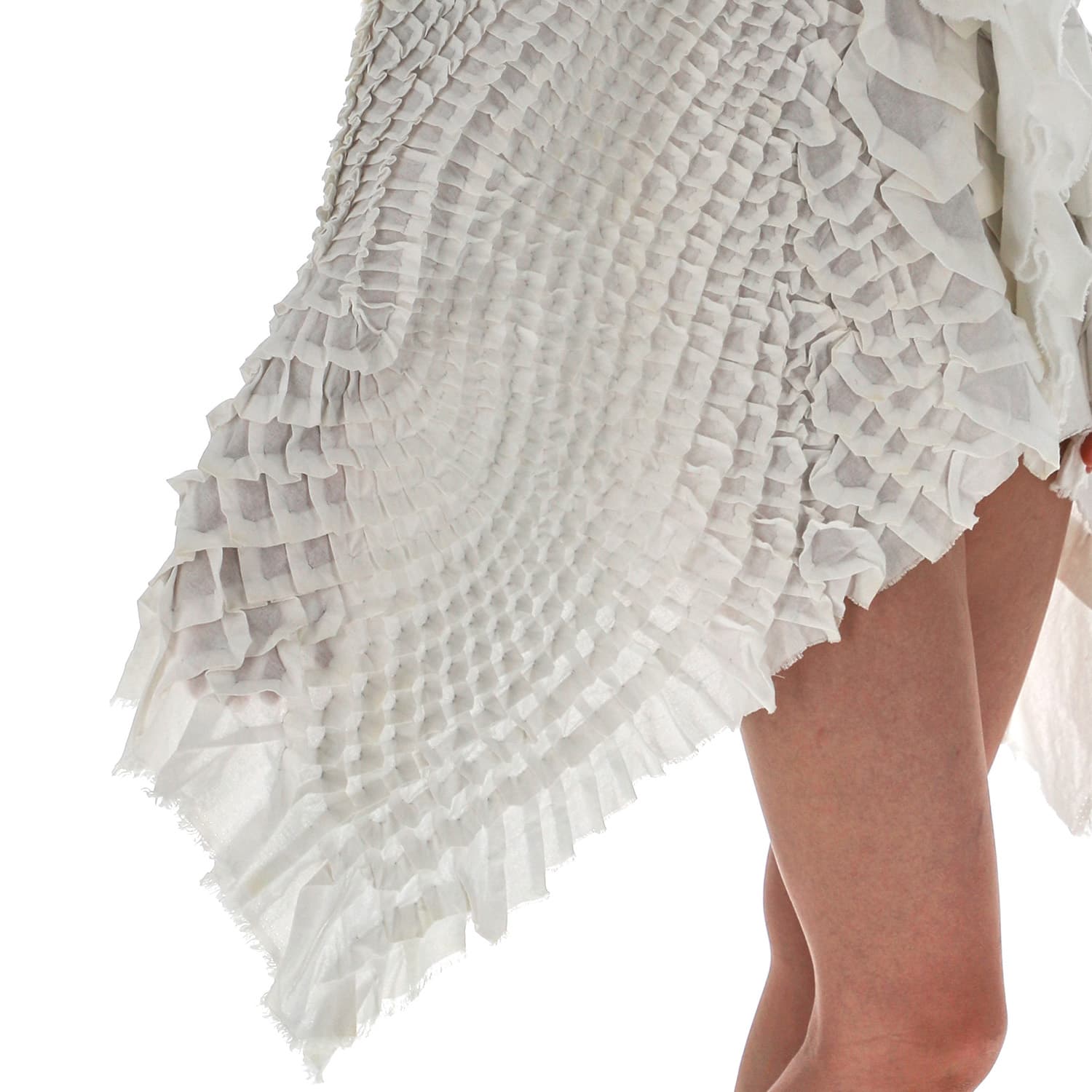
Kallos, Detail
Hiroko Hanamura for modeling, Hannah Jones for help with sewing, and Jane Matrana for fashion consultation. Photo Courtesy: The Advanced Visualization Laboratory (AVL) at Indiana University.
About the look
Kallos
Muslin
2023